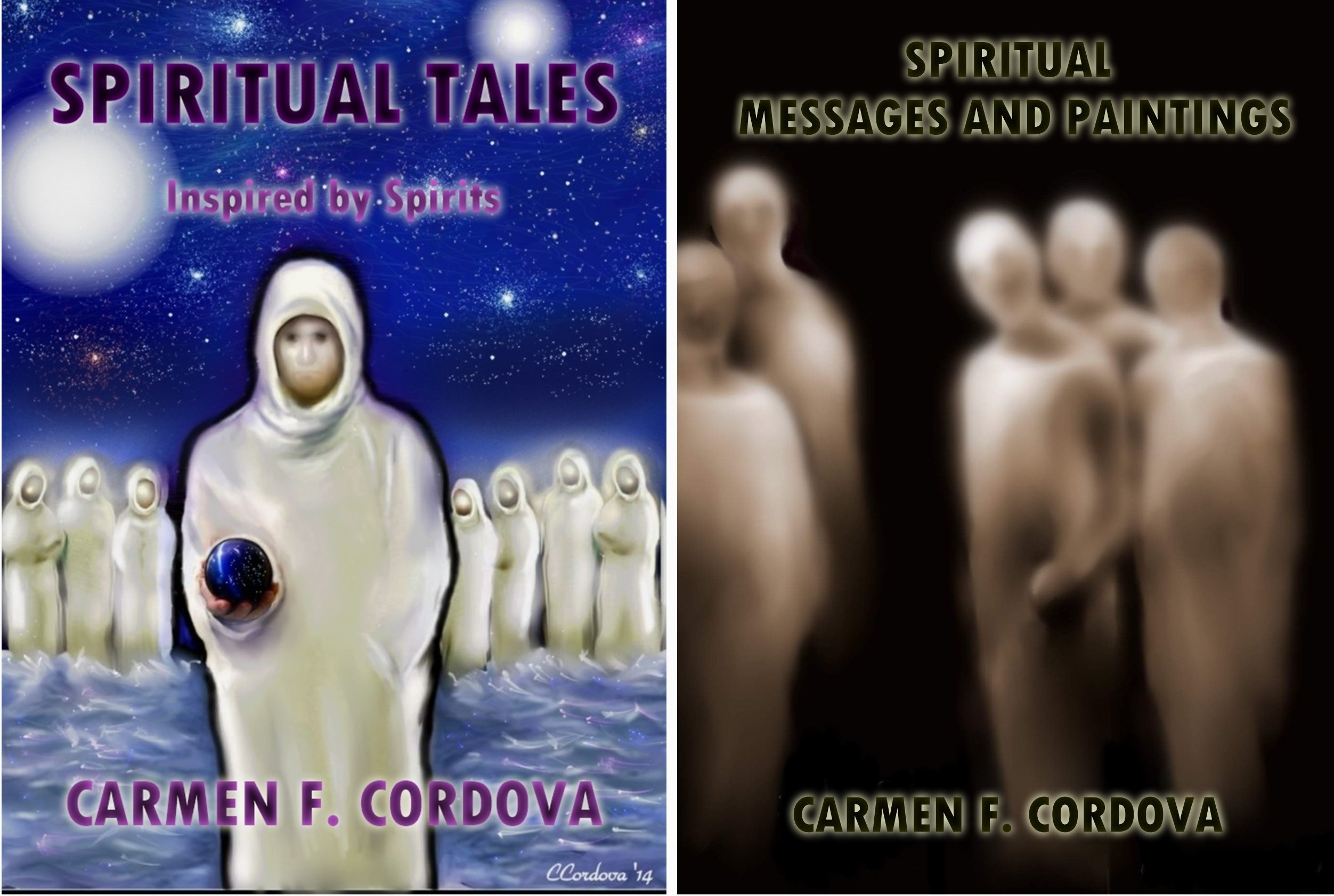What is an Apparition ?
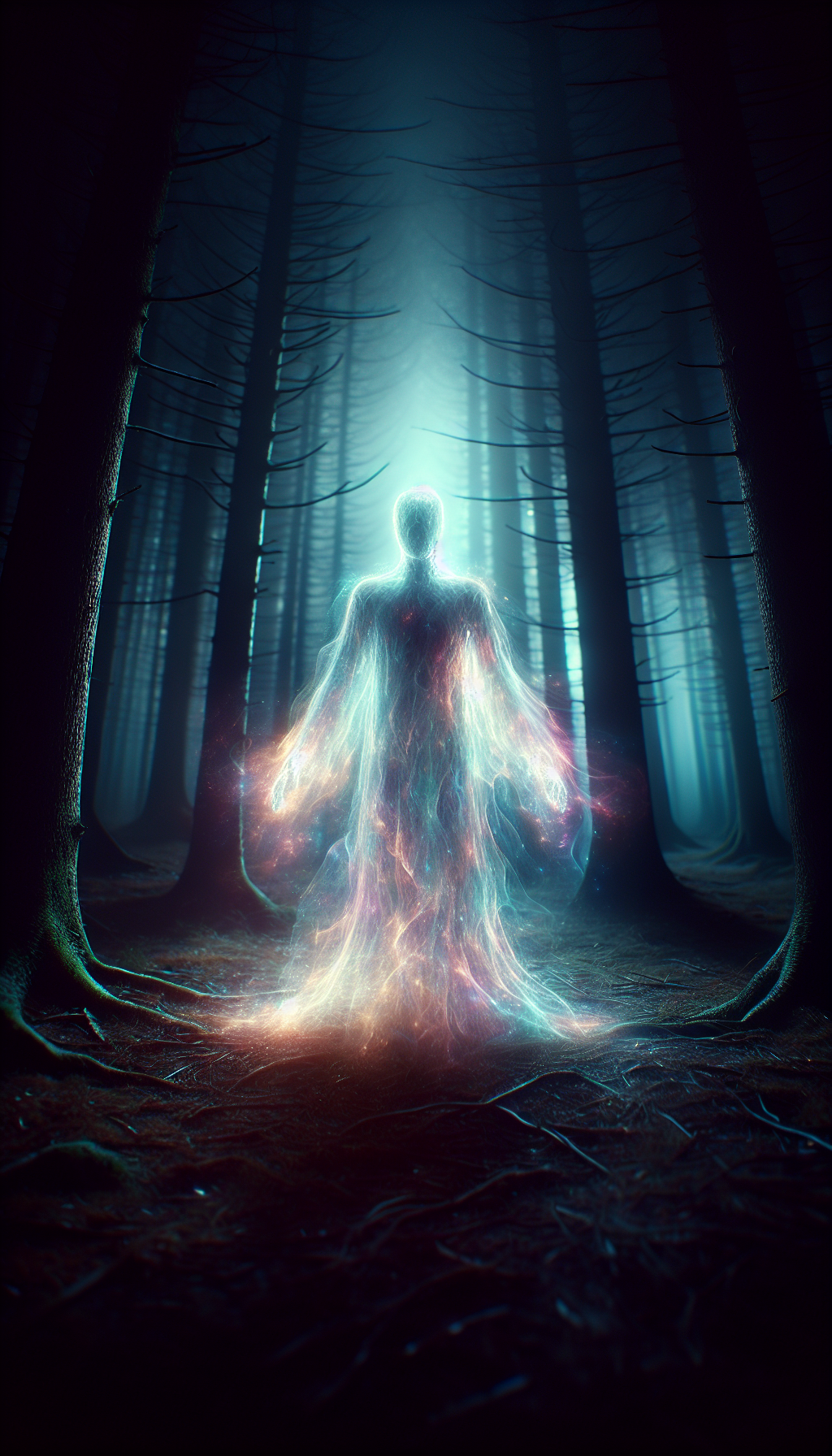
What are apparitions and why do they captivate us? Apparitions are supernatural manifestation, often seen in religious contexts, that provide messages, guidance, or comfort. From the Virgin Mary’s appearances across the world to mysterious figures in times of crisis, this article delves into the most fascinating apparitions in history and their profound impacts.
Understanding Apparitions
Marian apparitions are reported supernatural appearances of the Virgin Mary, distinct from internal visions or dreams. Mary usually appears to individuals or groups during these events. She delivers messages or signs that often highlight elements of the Christian faith, including other Marian apparitions. Unlike dreams or internal visions, events classified as Marian apparitions require visual confirmation by the seers, providing a tangible sense of divine presence.
The purpose of Marian apparitions is to draw attention to some aspect of the Christian message, often occurring during pivotal historical moments to address specific needs and challenges. These apparitions serve as reminders of Mary’s continued maternal care for the faithful, offering comfort, intercession, and guidance. These events offer believers a palpable sense of divine presence, reinforcing their faith.
Marian apparitions are considered not only historical events but also as manifestations of Mary’s continuing role in salvation history. They highlight specific elements of the Christian faith relevant to their time, making them significant in both spiritual and historical contexts. Through these apparitions, believers are reminded of Mary’s maternal presence and her role in bringing them closer to her son, Jesus Christ.
The impact of these apparitions on the faithful is profound, often leading to the establishment of pilgrimage sites and fostering a deeper connection with the divine. As we explore the most notable Marian apparitions, we will see how these divine encounters have shaped the lives of individuals and communities, leaving a lasting legacy of faith and devotion.
The Process of Recognizing Apparitions According to Catholic Church
The Catholic Church has strict criteria for investigating claimed Marian apparitions to discern their authenticity:
- A local bishop is responsible for establishing a commission of experts to evaluate the details of the apparition and the credibility of the visionary.
- If a bishop is uncertain about the validity of an apparition, the case may be escalated to the bishops’ conference.
- Ultimately, the case can be referred to the pope for a final decision.
The process of approving an apparition is thorough and can take many years, sometimes even centuries. Approval of an apparition indicates that the Church finds the message officially approved and consistent with faith and morality, allowing for public acknowledgment.
The Church is currently emphasizing caution in the discernment of modern apparitions, with new guidelines centralizing authority over the investigation process. The Vatican is set to publish a new document outlining the norms for evaluating modern apparitions, indicating an ongoing concern for proper discernment.
This process ensures that only genuine apparitions are recognized, maintaining the integrity of the Catholic faith and its teachings.
Notable Marian Apparitions
A Marian apparition is when the Virgin Mary, the mother of Jesus, is reported to appear in a visual form to individuals, distinct from internal visions or dreams. These apparitions are considered external manifestations of Mary and are often accompanied by messages aimed at drawing attention to specific aspects of the Christian faith. The Catholic Church maintains a formal process for evaluating claimed Marian apparitions, recognizing that many may be fraudulent or based on other factors.
Marian apparitions frequently lead to the establishment of pilgrimage sites, as these locations are often deemed sacred due to the associated events. Many seers of Mary report that she speaks in their native language, which helps to integrate her image within the local cultural context. One of the most famous Marian shrines is the Basilica of Our Lady of Guadalupe in Mexico City, which attracts millions of pilgrims each year.
These apparitions can influence national identity, as seen with Our Lady of Guadalupe, whose image has become a central cultural symbol in the country of Mexico. During periods of political unrest, Marian apparitions have often been perceived as God interventions to challenge existing power structures.
The phenomenon of Marian apparitions has been linked to various miracles, such as healings, although these are not considered the main purpose of the apparitions
Lady of Guadalupe
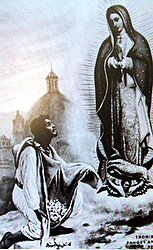
Our Lady of Guadalupe is recognized as the patroness of Mexico and serves as a significant figure in Mexican culture and religion. Mary appeared to Juan Diego four times in December 1531, requesting a shrine to be built at Tepeyac Hill. The miraculous image of Our Lady of Guadalupe was imprinted on Juan Diego’s cloak, serving as the foundation for her veneration.
The apparition of Our Lady of Guadalupe played a significant role in converting millions of indigenous people in Mexico.
The image of Our Lady of Guadalupe is depicted as a mestiza woman, symbolizing the blending of Indigenous and European cultures. The Basilica of Our Lady of Guadalupe in Mexico City is a central site of pilgrimage and worship, attracting millions of visitors annually. Her feast day is celebrated on December 12, recognized with special masses and festivities throughout Mexico and beyond.
The Virgin of Guadalupe became a symbol of the Mexican independence movement when her image was used by Miguel Hidalgo y Costilla in 1810.
Pope John Paul II canonized Juan Diego and reaffirmed the importance of Our Lady of Guadalupe in the Catholic Church. The cultural and spiritual impact of Our Lady of Guadalupe continues to resonate with millions of believers.
Mary and Bernadette in Lourdes, France
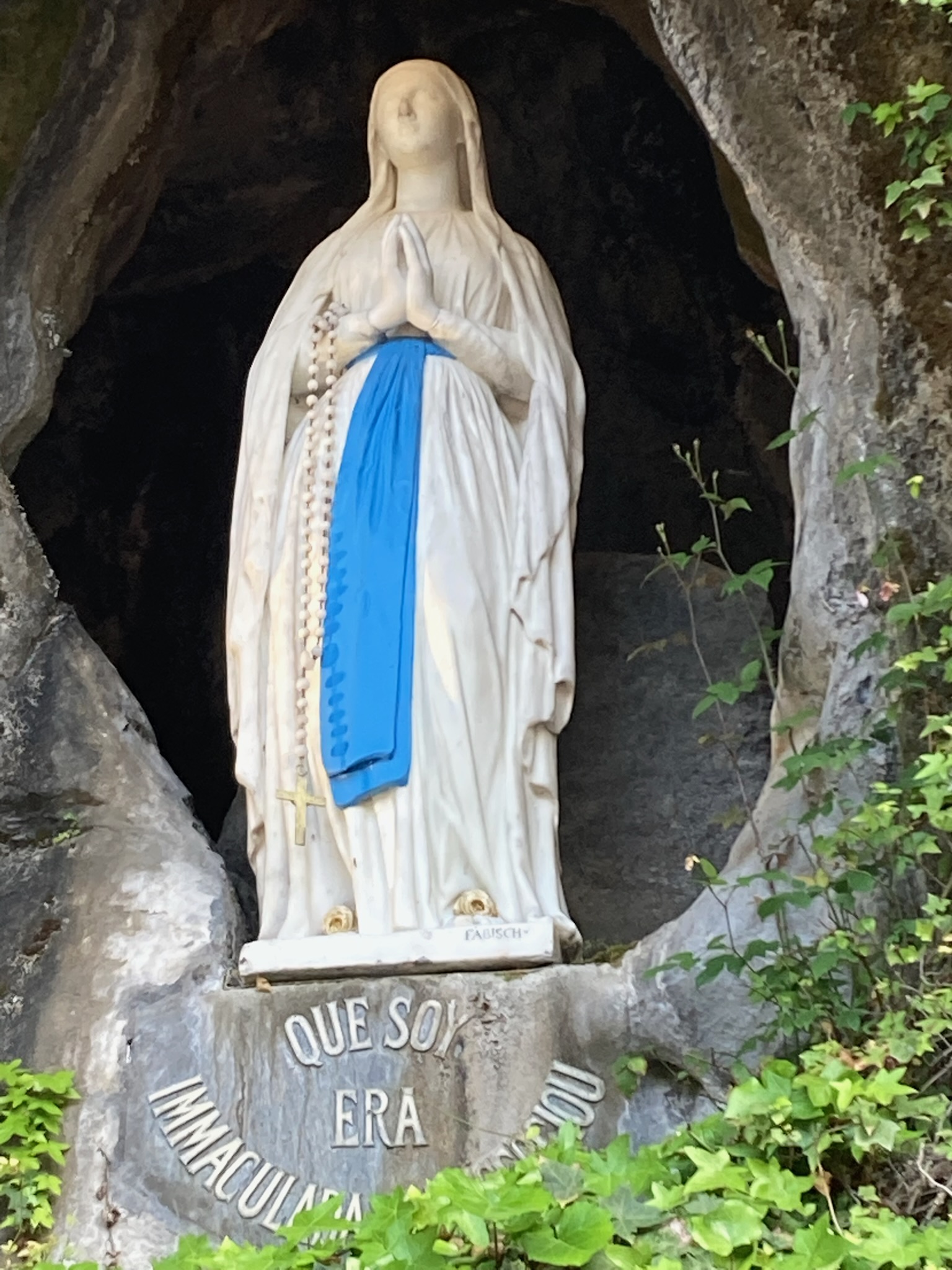
The first apparition of the Virgin Mary to Bernadette Soubirous occurred on February 11, 1858, while she was collecting firewood. Key events during the apparitions include:
- Between February 11 and July 16, 1858, Bernadette reported 18 appearances of a lady she described as beautiful and dressed in white.
- Bernadette was instructed to return to the grotto daily for 15 days, establishing a ritual that attracted many followers.
- On March 25, 1858, the apparition identified herself as ‘the Immaculate Conception,’ a pivotal moment in the validation of her claims.
The first miracle attributed to the grotto’s waters was reported shortly after Bernadette’s vision, when a local woman experienced healing after bathing in the spring.
The messages conveyed by the apparition often emphasized themes such as penance and prayer for sinners. Pope Pius XI canonized Bernadette Soubirous in 1933, recognizing her significance in the history of Marian apparitions.
The apparitions at Lourdes have had a lasting impact on the Catholic Church and the faithful. The healing waters at Lourdes have become a major pilgrimage site known for miraculous healings, drawing millions of visitors seeking spiritual and physical solace. The story of Bernadette and her visions continues to inspire devotion and faith among Catholics worldwide.
Mary and Three Children in Fatima
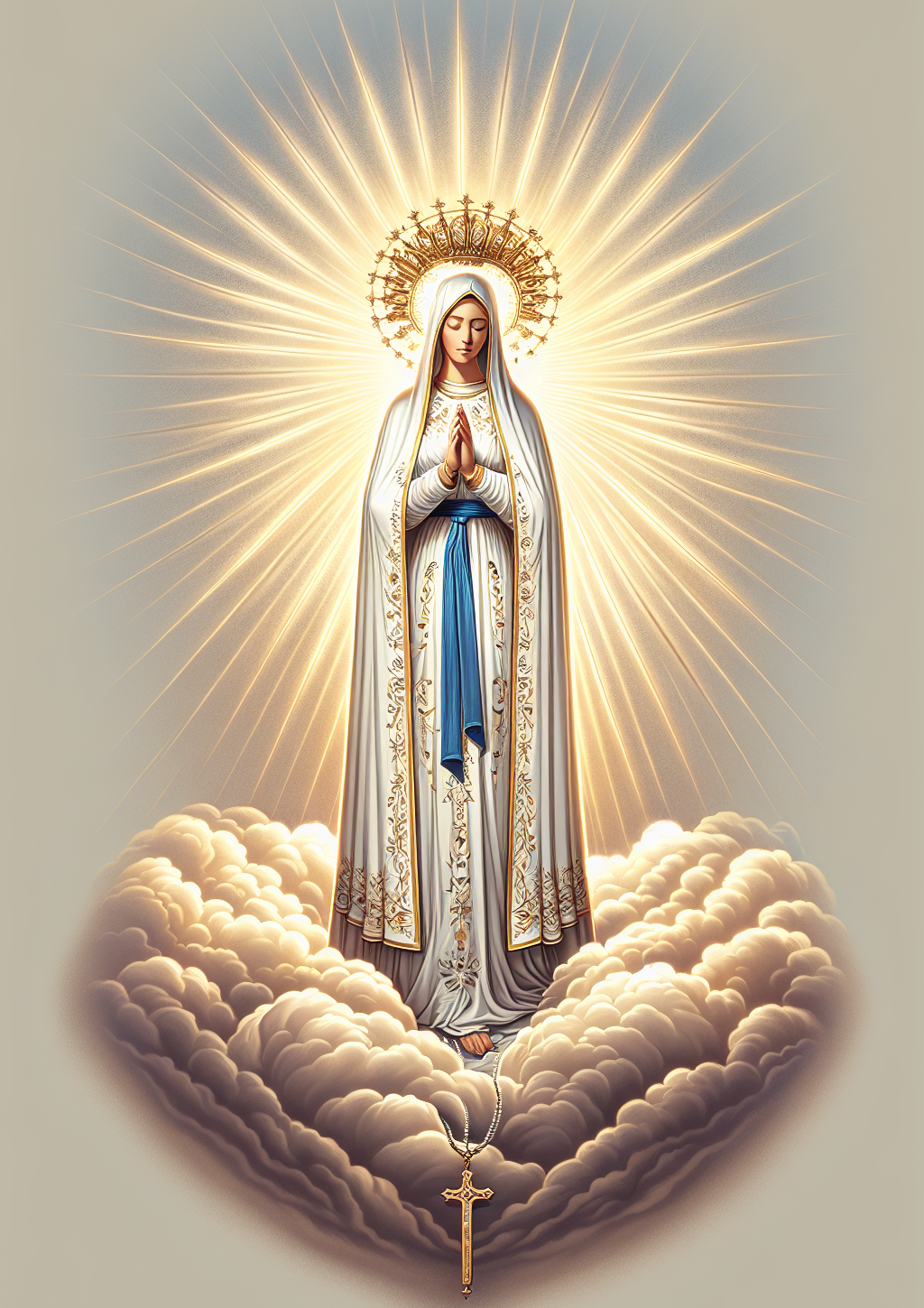
The Virgin Mary, known as Our Lady of Fatima, appeared to three shepherd children in Portugal from May to October 1917:
- The children were Lucia dos Santos, Francisco, and Jacinta Marto.
- The first apparition occurred on May 13, 1917.
- The Virgin Mary appeared six times in total, with the last apparition on October 13, 1917.
- During the apparitions, Mary told the children to pray the rosary for world peace.
- She emphasized the importance of devotion to her Immaculate Heart.
The Virgin Mary revealed three secrets to the children, which included prophecies about future conflicts and a vision pertaining to hell. On the final day of the apparitions, approximately 70,000 people witnessed a solar phenomenon known as the Miracle of the Sun. The Fátima apparitions were officially recognized by the Catholic Church as worthy of belief in 1930.
Francisco and Jacinta Marto were canonized as saints in 2017, marking them as the youngest non-martyred children to be recognized as saints in Catholicism. Lucia dos Santos later became a Carmelite nun and lived to be 97 years old, while her cousins died young due to the influenza pandemic.
The messages from Our Lady of Fatima continue to resonate with the faithful, emphasizing prayer, penance, and devotion.
Mary in Medjugorje
The visions in Medjugorje reportedly began on June 24, 1981, when six children claimed to see an apparition of the Virgin Mary. Key details include:
- The children who reported the apparitions were between the ages of ten and sixteen at the time of the first sighting.
- The initial apparitions were characterized by the seers describing Mary as a young woman with blue eyes and black hair.
- Mary was seen hovering above the ground.
Key points regarding the Medjugorje apparitions and investigations are:
- In May 2019, Pope Francis granted permission for official pilgrimages to Medjugorje, but did not authenticate the reported apparitions.
- Following the initial reports, the local bishop, Pavao Žanić, established several commissions to investigate the authenticity of the apparitions.
- The investigation committees generally found insufficient evidence to declare the apparitions as authentic.
Pope Francis has expressed doubts about the later apparitions while acknowledging the positive spiritual outcomes for many pilgrims. As of 2024, the Vatican allows Catholics to visit Medjugorje for its spiritual significance but cautions against focusing on the alleged visionaries. The Medjugorje apparitions remain a topic of intrigue and devotion for many believers.
Mary in Kibeho, Rwanda
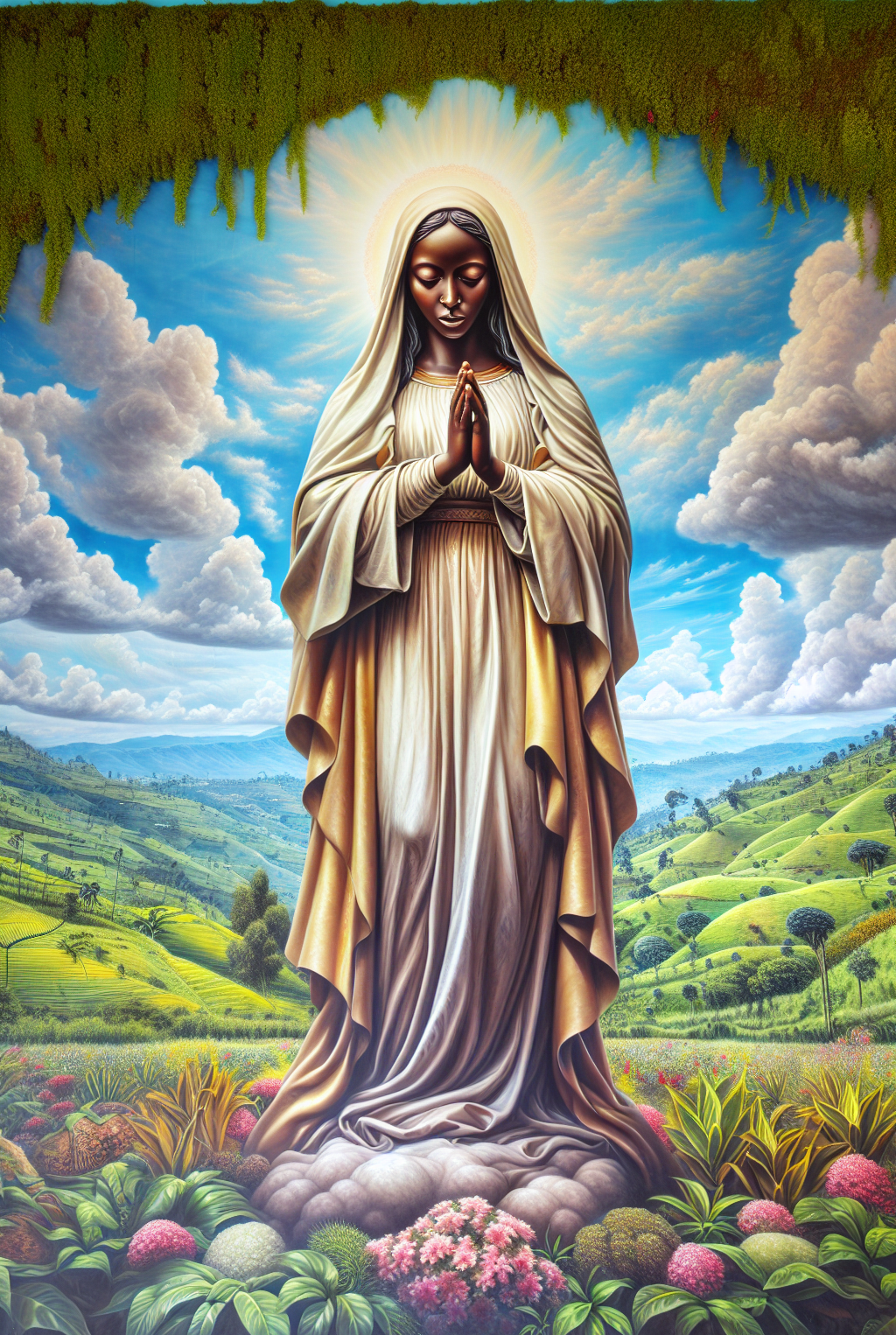
In 1981, reports of Marian apparitions began to emerge in Kibeho, Rwanda, particularly at Kibeho College, a girls' secondary school. Mary, who referred to herself as "Nyina wa Jambo," meaning "Mother of the Word," appeared numerous times from 1981 to 1989.
The apparitions approved by the Vatican involved three young girls—Alphonsine, Anathalie, and Marie Claire—who reported seeing visions of the Blessed Virgin Mary.
The first reported apparition occurred on November 28, 1981, when Alphonsine Mumureke, a student at Kibeho College, claimed to have seen the vision. Later on, both Anathalie and Marie Claire also reported similar experiences.
Although these three girls were the primary seers, the number of alleged visionaries grew to 14 by November 28, 1982, and reached 33 by November 28, 1983.
The messages from the Virgin Mary at Kibeho included a strong call for repentance, conversion, and prayer. She also emphasized the importance of the rosary, fasting, and helping others.
Furthermore, the girls reported having a prophetic vision of the 1994 Rwandan genocide, which many believe predicted the violence and hatred to come.
The Role of the Virgin Mary in Apparitions
The Virgin Mary serves as a mediator of grace and intercession, deeply integrated into salvation history. As a maternal figure in the lives of believers, Mary offers comfort and intercession, reinforcing her importance in the Christian faith. Her appearances in Marian apparitions are seen as extensions of her maternal care, guiding the faithful closer to her son, Jesus Christ.
Belief in Marian apparitions is considered a personal choice within the Catholic Church, supplementing core doctrines rather than being mandatory. These apparitions serve to enhance individual faith journeys, providing a tangible sense of divine presence and reassurance.
Impact on the Catholic Faith
These supernatural experiences encourage believers to deepen their connection with Christ and the Virgin Mary, reinforcing their commitment to the faith. Marian apparitions often occur during times when society faces significant challenges, providing messages of hope and reassurance to those in need. The messages from Marian apparitions often emphasize themes such as prayer, penance, and the need for spiritual renewal, impacting the collective consciousness of the faithful.
Marian apparitions stimulate spiritual revival among Catholics, leading to:
- Increased participation in prayer groups and charitable works.
- Pilgrimages to sites like Guadalupe, Lourdes, and Fatima, which are for physical healing, spiritual renewal, and deeper devotion.
- The appearance of Our Lady of Guadalupe, which significantly contributed to the conversion of millions of indigenous Mexicans and symbolizes care for the marginalized.
These apparitions serve as private revelation that can enrich believers’ faith without altering the core teachings of Catholicism. Fostering unity and inspiring acts of devotion and charity, Marian apparitions leave a lasting impact on the Catholic faith.
Some People see Apparitions While Others Cannot
Individuals’ beliefs in paranormal phenomena significantly influence their likelihood of experiencing apparitions. Personality traits such as openness to experience and extraversion are associated with a higher tendency to believe in and perceive apparitions. Cognitive style plays a role, with those favoring intuition over analytical thinking being more prone to accept paranormal experiences.
Factors that can shape perceptions of apparitions include:
- Religious background, with varying beliefs affecting what individuals are likely to see.
- Brain chemistry, as certain medical conditions may lead to hallucinations resembling ghostly encounters.
- Environmental factors, such as being in ambiguous or threatening situations, which can trigger experiences of apparitions in susceptible individuals.
These factors create a complex interplay that determines who might experience an apparition and who might not. Understanding these elements can help demystify why some people have these experiences while others do not.
Where do apparitions come from?
Apparitions are often viewed as external manifestations rather than internal visions, indicating that they occur within the perceiver’s environment. They are often associated with divine communication, where individuals believe they encounter celestial beings or figures, conveying significant messages. The origins of apparitions can stem from deep personal faith, cultural beliefs, or societal contexts that shape how individuals perceive supernatural experiences.
Many apparitions are reported during times of crisis, suggesting a psychological and spiritual response to fear, uncertainty, or the need for guidance. Historically, apparitions have been interpreted through the lens of various religious and cultural frameworks, affecting their acceptance and understanding. The context of the environment where apparitions occur plays a crucial role in their interpretation, influencing how witnesses describe their experiences.
These origins provide a multifaceted view of where apparitions come from, integrating spiritual, cultural, and psychological dimensions.
Are all Apparitions Good?

Not all apparitions are benevolent; some may present themselves as friendly but can be malevolent entities in disguise. Evil apparitions can manipulate feelings, leading individuals to invite them into their lives unknowingly. Signs of malevolent entities can include feelings of discomfort, fear, or a general sense of negativity when an apparition is present.
Benevolent spirits typically bring comfort and peace, while malevolent ones often provoke anxiety or distress. The nature of an apparition can often be discerned through intuition and the emotional response it evokes in individuals, revealing a deeper beauty in their presence.
Knowing the nature of apparitions helps individuals discern their experiences and protect themselves from potential harm.
Evil Apparitions

Evil apparitions are often described as manifestations of spirits that seek to cause fear or harm to individuals. Many cultures have legends of evil spirits or demons that can appear as apparitions to torment or mislead the living. Some believe that evil apparitions may be the souls of individuals who committed terrible acts during their lives, unable to find peace.
In religious contexts, evil apparitions are often associated with demonic possession and the necessity for exorcism to rid the afflicted of these spirits. Poltergeists are considered a type of evil apparition, known for causing disturbances and physical effects in the environment.
Some folklore suggests that evil apparitions can take on familiar forms to manipulate or deceive individuals, enhancing their frightening impact. Understanding the existence and nature of evil apparitions helps frame the need for spiritual protection and discernment in dealing with supernatural experiences.
Near Death and Seeing Apparitions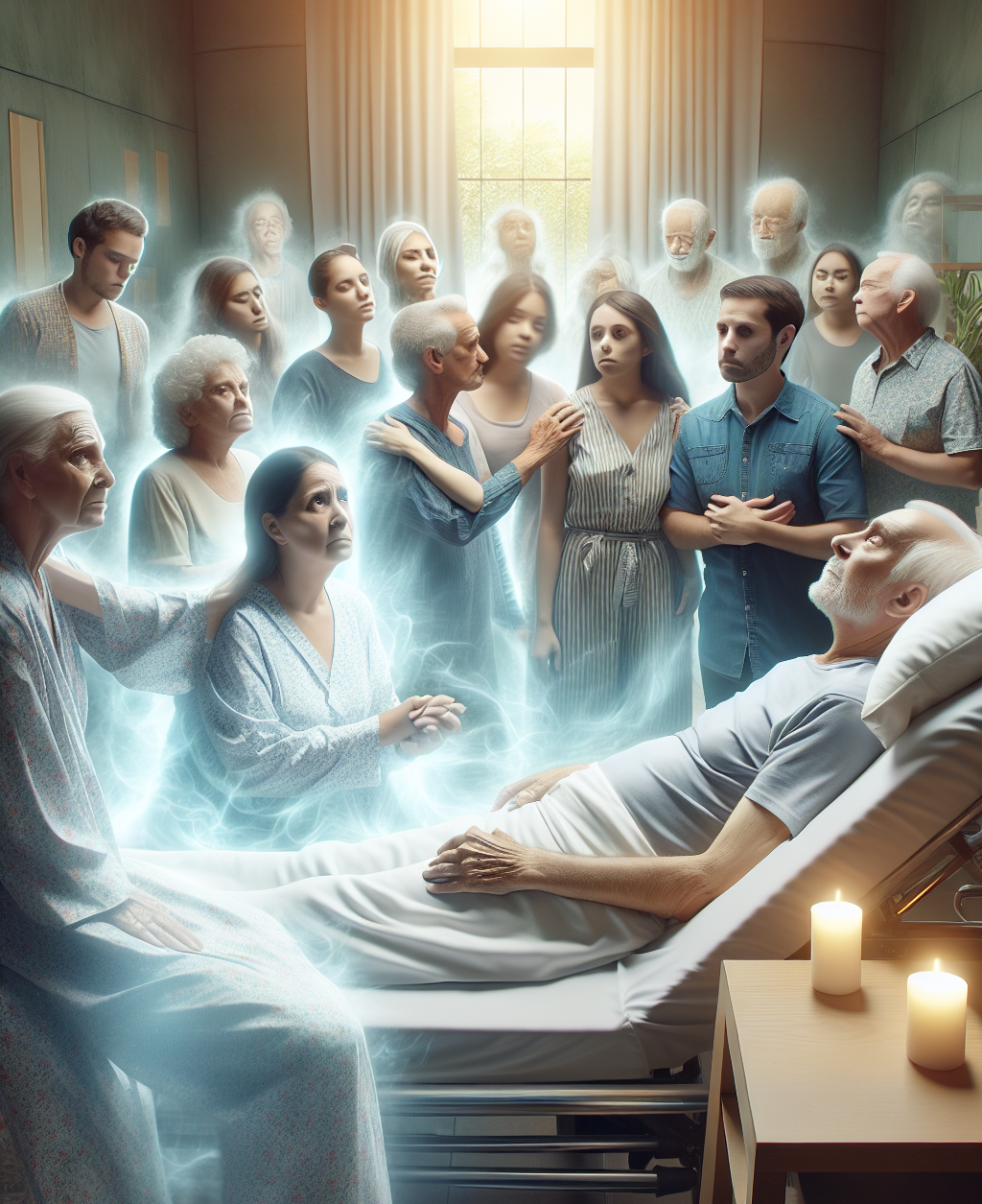
Individuals close to death often experience visions of deceased loved ones, which may provide comfort during the dying process. These experiences, described as visions, are typically not linked to hallucinations caused by medication or mental illness. Such visions can help ease the transition to death, making the dying feel less isolated as they perceive connections to the spiritual realm.
It’s common for dying individuals to engage in conversations with these apparitions, as they may perceive them as real and comforting. The occurrence of these visions is often seen as a natural part of the dying process, providing reassurance to both the dying and their loved ones.
Mediums and Apparitions
Mediums might perceive spirits through various abilities and experiences, such as:
- Clairvoyance and clairaudience, allowing them to receive messages from the deceased.
- Feelings of energy shifts when interacting with spirits, indicating a connection that may involve physical sensations during communication.
- Relying on emotions and past experiences to communicate effectively.
The perception of spirits may vary widely among mediums.
Skepticism exists regarding the authenticity of mediums, with many asserting that while some may genuinely connect with spirits, others may rely on tricks or cold readings. Mediums often act as intermediaries, claiming to communicate with spirits from the deceased, suggesting they perceive these entities rather than traditional apparitions.
The distinction between mediums seeing spirits and traditional apparitions often lies in the medium’s interpretation of the experience, which may not align with conventional definitions of an apparition.
The Purpose of an Apparition
The primary aim of an apparition is to bring attention to specific aspects of Christian teachings, addressing the particular needs of the time and place where it occurs. Believers view apparitions as manifestations of Mary’s continued maternal care for the Church, conveying messages that inspire devotion and faith. While miraculous events often accompany apparitions, their role is not seen as the main purpose; rather, they serve to validate the messages being communicated.
Apparitions frequently lead to the establishment of shrines and pilgrimage sites, facilitating communal expressions of faith and devotion. They are often seen as a response to spiritual or societal needs, offering guidance, hope, and reassurance during challenging times. The messages delivered during apparitions can serve to inspire faith and address specific communal or personal concerns.
These events can help unite people from various backgrounds through shared experiences of divine intervention. Marian apparitions are significant as they reflect the maternal role of Mary in the Christian faith, serving as a mediator of grace. Apparitions are not dogmatic teachings but are personal experiences of divine presence that can enhance individual faith journeys.
Ghost and Apparitions
Ghosts are typically perceived as the spirits of deceased individuals, often associated with specific locations or events, while apparitions are manifestations that can include a range of spiritual beings, not limited to human spirits.
Apparitions can be seen as visual representations of spiritual entities, which may not necessarily have a physical form or residence, unlike ghosts that are often tied to their earthly existence.
Ghosts are typically believed to be remnants of deceased individuals, while apparitions can encompass a broader range of experiences, including visions of living beings or inanimate objects. The term ‘ghost’ implies a survival of some aspect of a person after death, whereas ‘apparitional experience’ does not necessarily involve this belief.
Differences between apparitions and ghosts include:
- Apparitions can occur in everyday settings and often appear lifelike, whereas ghosts are often associated with specific haunted locations.
- Unlike ghosts, apparitional experiences may not leave physical evidence of their presence, such as footprints.
- Apparitions may serve comforting purposes during times of crisis, while ghosts are often depicted as unsettling or malevolent.
Apparitions and Cemeteries
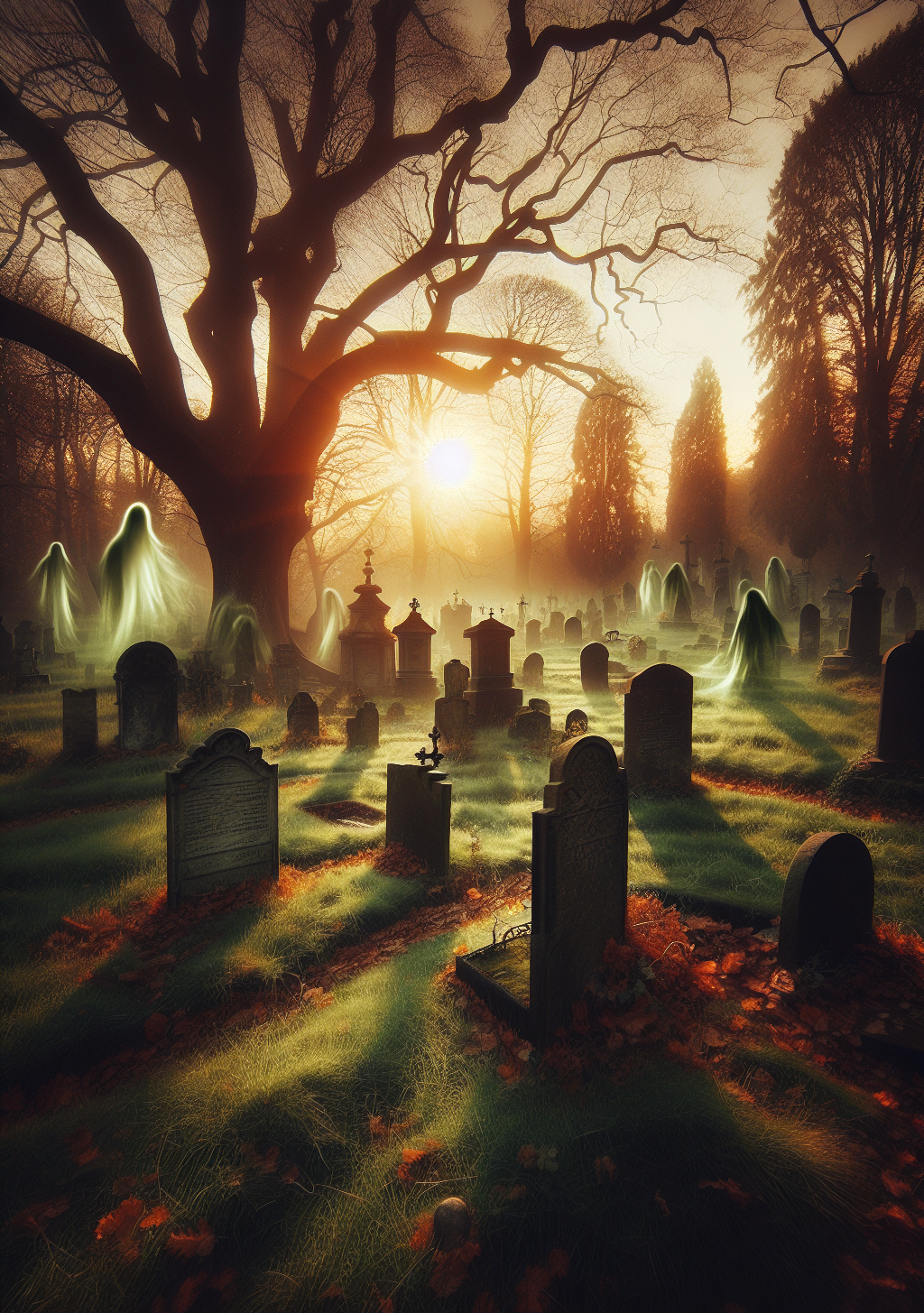
Certain cemeteries are known for frequent ghost sightings and are considered haunted, often attracting visitors interested in paranormal activities. Many graveyards contain stories of spirits who refuse to rest, leading to a variety of eerie encounters reported by visitors.
Some cemeteries, like Colonial Park Cemetery in Savannah, Georgia, are known for their history and the ghostly tales associated with them. Legends often surround particular graves, such as Alice Flagg’s Grave in South Carolina, where visitors leave tokens in hopes of connecting with her spirit.
Old cemeteries, like the Old Tonopah Cemetery in Nevada, often become infamous for their haunting atmospheres and local ghost stories.
Hallucinations and Apparitions
Hallucinations can be mistaken for apparitions, particularly in grieving individuals who perceive deceased loved ones. The experience of seeing apparitions may provide comfort to individuals, regardless of whether they are classified as hallucinations or supernatural occurrences.
Medical professionals may struggle to distinguish between hallucinations and genuine spiritual experiences, leading to potential biases in interpretation. The acceptance of the possibility that apparitions are real can influence how people cope with bereavement.
Addressing Skepticism and Misconceptions
Skepticism about apparitions can stem from a broader cultural distrust of religious experiences. Misunderstandings about the nature of religious experiences can contribute to skepticism regarding their validity. Popular media can create sensational narratives around apparitions, influencing public perception by blurring the lines between faith and fiction.
Addressing these misconceptions requires a nuanced understanding of both the spiritual and psychological dimensions of apparitions. This approach can help bridge the gap between believers and skeptics, fostering a more informed dialogue about truth.
Modern-Day Apparitions
The Vatican has recently approved a shrine dedicated to Our Lady of the Rock, an alleged apparition site in Italy, reflecting renewed interest in contemporary Marian sites. Following a significant number of pilgrimages to Medjugorje since 1981, the Vatican has approved the devotion practices there but has not confirmed the authenticity of the alleged apparitions.
The approval of devotion to Our Lady of Sorrows in Spain has been one of the recent Church acknowledgments regarding new apparitional claims. Modern-day apparitions continue to capture the interest of the faithful, as recent events have shown a resurgence in belief and desire for devotion in various locations around the world.
These contemporary apparitions demonstrate that the phenomenon continues to be miraculously imprinted, providing spiritual guidance and inspiration to new generations of believers in Christianity, the holy spirit, and humanity.
Throughout history, Marian apparitions have served as profound expressions of divine intervention, providing guidance, hope, and reassurance to the faithful. These supernatural encounters, whether in Guadalupe, Lourdes, Fatima, or Medjugorje, have left an indelible mark on the Catholic Church and its believers.
By exploring the origins, significance, and impact of these apparitions, we gain a deeper understanding of their role in shaping the spiritual landscape. As we continue to witness modern-day apparitions and their influence, it is clear that the legacy of these divine encounters endures, inspiring faith and devotion across the world.
Summary
Marian apparitions have profoundly impacted the Catholic faith, offering messages of hope, guidance, and reassurance during times of need. These supernatural encounters, from Guadalupe to Fatima, have inspired millions, leading to the establishment of pilgrimage sites and fostering deep spiritual connections. Understanding the nature of these apparitions, their origins, and their impact helps us appreciate their significance in the Christian faith. As we continue to explore and recognize new apparitions, their legacy endures, reminding us of the divine presence and maternal care of the Virgin Mary. Let these stories inspire us to deepen our faith and seek spiritual renewal.
While many apparitions originate from the Divine Source, some arise from darkness. Understanding the nature of apparitions helps individuals discern their experiences and protects them from potential harm.
Click below and views more than 600 pieces of spiritual artwork

Spiritual Books
If you enjoy the articles on this website, you will also appreciate the short stories in the books below. Click here and continue the journey.
